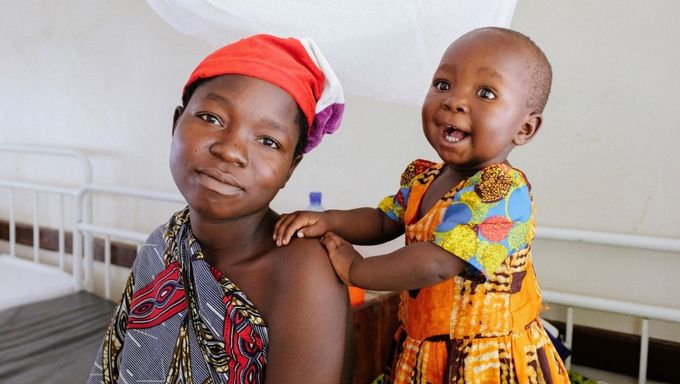Shaping the Next-generation of Interventions for Malaria Prevention
08.07.2021
Together with the Bill and Melinda Gates Foundation, Swiss TPH has launched a new project bringing together research & development and implementation specialists, modellers and global-health experts to shape the next-generation of medical interventions for malaria prevention.

There is still a gap in preventing infection among children and other vulnerable populations most affected by malaria. Picture: Danielle Powell, Swiss TPH
Despite progress of countries in substantially reducing the number of malaria cases since 2000, malaria remains a major public health concern. In 2019, there were an estimated 229 million cases of malaria worldwide according to the World Health Organisation (WHO). Worryingly, in some countries, malaria is even on the rise.
Children under five are particularly vulnerable. In 2019, they accounted for 67% (274,000) of all malaria deaths worldwide. Pregnant women are also at a higher risk of contracting malaria and developing severe disease that can lead to anaemia, low birth weight or infant death.
To address this issue, Swiss TPH together with the Bill and Melinda Gates Foundation (BMGF) launched a new project to shape the next-generation of medical interventions for malaria prevention. The project aims to fill the gaps that still remain in medical interventions for prevention for these vulnerable populations that experience the highest burden of malaria.
Need for new medical interventions
Despite the potential public health value, only a small number of drugs are intended for preventative use, for example as seasonal malaria chemoprevention in children, or intermittent preventative treatment of pregnant women.
Concerns about increasing resistance to available prophylactic drugs means that many vulnerable individuals are not optimally protected. To tackle drug resistance, improve treatment compliance and reduce disease burden, new medical interventions are needed for seasonal or multi-year prevention.
Modelling to connect public health needs and intervention characteristics
Next-generation medical interventions for prevention include prophylactic drugs or injectable small molecule drugs, monoclonal antibodies or vaccines. Their development requires guidance from key stakeholders to specify performance characteristics. “Modelling can support evidence-based decision making between early candidate development, implementation and public-health impact,” said Melissa Penny, Head of the Disease Modelling Unit at Swiss TPH.
Developing new medical interventions is time-consuming and costly, and it is often unclear what the public health impact will be for a new intervention until very late in the development process. However, selecting between promising candidate interventions must happen early in development.
“We use mathematical models of disease and intervention dynamics to predict what properties an intervention should have, such as efficacy, in order to achieve a particular public health impact,” said Lydia Burgert, Scientific Collaborator at Swiss TPH. “For example, we define the public health impact we want to have in vulnerable populations and using models, we then work backwards to define the type of intervention that will fill this need.”
Kick-off for future collaboration
A first convening organised by Swiss TPH and BMGF with around 60 representatives from academia, product development, international organisations and malaria-endemic countries took place at the end of June. Participants identified the key challenges around product characteristics from a research and development, implementation and global heath perspective, and prioritised the main questions for modelling that would lay the groundwork for collaboration over the next three years.
Stay connected
Subscribe to our newsletter and get all the latest research news, project updates, course and event listings from Swiss TPH.